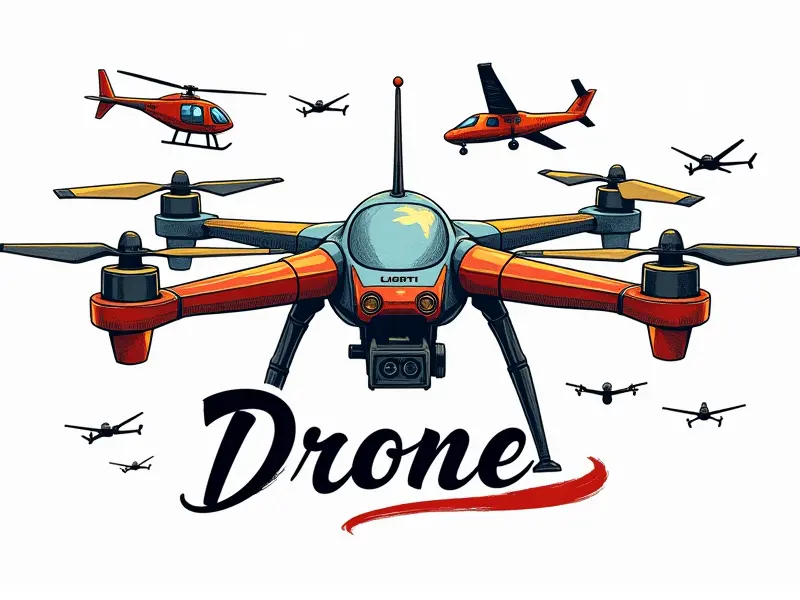Drone antenna design basics

Essential Guide to Drone Antenna Design
When it comes to drone technology, the antenna plays a crucial role in ensuring reliable communication between the controller and the drone. This guide will walk you through the basics of drone antenna design, helping you understand how to optimize performance for various applications.
Understanding Drone Antenna Basics
A drone antenna is responsible for transmitting and receiving radio frequency (RF) signals that control the drone's flight path and data transmission. The effectiveness of these antennas can significantly impact the range, stability, and overall performance of your drone.
- Frequency Bands: Antennas are designed to operate within specific frequency bands such as 2.4GHz or 5.8GHz.
- Polarization: The orientation of the antenna's electromagnetic field, which can be vertical, horizontal, circular, or elliptical.
- Gain: Measured in decibels (dB), this indicates how well an antenna focuses RF energy in a particular direction.
Optimizing Antenna Performance for Drones
To maximize the performance of your drone's antenna, consider the following factors:
- Airframe Integration: Ensure that the antenna is properly mounted and not obstructed by other components.
- Signal Interference: Minimize interference from metal objects or electronic devices near the drone.
- Environmental Conditions: Take into account weather conditions such as rain, humidity, and temperature fluctuations.
The Role of Antennas in FPV Drones
First-person view (FPV) drones rely heavily on high-quality antennas for clear video transmission. The right antenna setup can make the difference between a smooth flight experience and frustrating signal drops.
- Video Transmission: Use directional or patch antennas to enhance video clarity over long distances.
- Control Signals: Ensure that control signals are transmitted reliably using omnidirectional or whip antennas.
DIY Drone Antenna Setup Tips
If you're building your own drone, here are some tips for setting up the antenna:
- Select Appropriate Components: Choose high-quality components that match your frequency requirements.
- Proper Mounting: Securely mount antennas to prevent movement during flight.
- Cable Management: Use shielded cables and connectors to minimize signal loss.
Common Mistakes in Drone Antenna Placement
Avoid these common mistakes when installing your drone's antenna:
- Improper Orientation: Ensure that the antenna is correctly oriented for optimal polarization.
- Obstruction by Metal Parts: Keep antennas away from metal components to avoid signal degradation.
- Inadequate Grounding: Proper grounding can reduce interference and improve overall performance.
Optimal Antennas for RC Quadcopters
Selecting the right antenna is crucial for quadcopter drones. Consider these options:
- Omnidirectional Antennas: Ideal for general use and short-range applications.
- Directional Antennas: Suitable for long-distance flights requiring focused signal transmission.
Key Factors in Drone Antenna Selection
When choosing an antenna, consider the following factors:
- Frequency Band Compatibility: Ensure that the antenna operates within your drone's frequency range.
- Polarization Match: Align the polarization of both transmitter and receiver antennas for maximum efficiency.
- Environmental Adaptability: Choose antennas designed to withstand various weather conditions.
Simplified Guide to Drone Antenna Configuration
Fine-tuning your drone's antenna configuration can greatly enhance performance. Follow these steps:
- Test Signal Strength: Use a signal strength meter to assess the current setup.
- Adjust Mounting Position: Experiment with different mounting positions for optimal results.
- Monitor Performance: Continuously monitor and adjust settings based on real-world performance data.
Enhancing Signal with Proper Antenna Placement
The placement of your drone's antenna can significantly affect signal quality. Here are some tips:
- Avoid Obstructions: Keep antennas clear from metal objects and other electronic devices.
- Optimal Orientation: Orient the antenna for best polarization match with the receiver.
- Grounding Techniques: Proper grounding can reduce interference and improve signal clarity.
Mastery of Drone Antenna Basics
To master drone antenna design, it's essential to understand the fundamental principles and practical applications. By following this guide, you'll be able to optimize your drone's performance and enjoy a more reliable flying experience.

